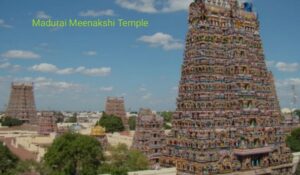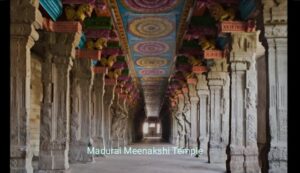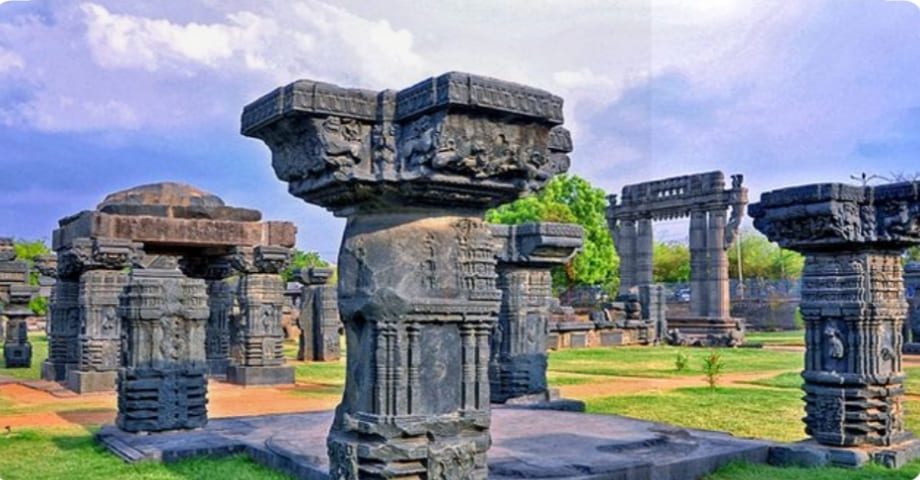Nestled in the heart of Madurai, Tamil Nadu, the Madurai Meenakshi Temple stands as a testament to the grandeur of Dravidian architecture and the deep-rooted spirituality of Hinduism. This ancient temple, dedicated to Goddess Meenakshi and her consort, Lord Sundareswarar (Shiva), is not just a place of worship but a vibrant cultural and historical landmark. For centuries, it has attracted pilgrims, historians, and tourists alike, offering a unique glimpse into the rich traditions of Tamil culture. In this blog post, we will explore the historical significance, architectural marvels, and cultural importance of this iconic temple.

1.Madurai Meenakshi Temple: Historical Background
The origins of the Madurai Meenakshi Temple are steeped in legend and mythology. According to Hindu mythology, the temple marks the spot where Lord Shiva, in the form of Sundareswarar, appeared to marry Goddess Meenakshi, the daughter of King Malaya khwaja Pandya. This divine union is believed to have sanctified the city of Madurai, making it a sacred space for devotees.
Historically, the temple’s foundation dates back to ancient times, with references in Tamil literature as early as the 6th century CE. However, the temple as it stands today owes much of its grandeur to the Nayak rulers, particularly King Tirumala Nayak, who undertook major renovations and expansions during the 16th and 17th centuries. The Nayak dynasty’s contributions transformed the temple into a sprawling complex, adorned with magnificent gopurams (gateway towers) and intricate carvings, making it a jewel of Dravidian architecture.
The temple also played a significant role during the Sangam period, a golden era of Tamil literature, culture, and civilization. It was a center of learning and art, attracting poets, scholars, and musicians from across the region. The cultural importance of the temple is further highlighted in ancient Tamil texts, which describe it as a symbol of the city’s prosperity and spiritual prominence.
2.Madurai Meenakshi Temple: Architectural Marvels
The Madurai Meenakshi Temple is an architectural wonder, showcasing the brilliance of Dravidian design. The temple complex spans 14 acres, with 12 towering gopurams that dominate the skyline of Madurai. These gopurams, covered in thousands of colorful sculptures depicting gods, goddesses, demons, and mythical creatures, are not only visually stunning but also serve as a gateway to the divine.
The tallest of these towers, the South Gopuram, rises to a height of 170 feet and is adorned with over 1,500 sculptures. Each gopuram is a masterpiece, reflecting the artistic expertise of the craftsmen who worked on them centuries ago. The vibrant colors and intricate details of these sculptures are a feast for the eyes, capturing the imagination of anyone who beholds them.
Within the temple complex, visitors will find several manda pams or halls, each with its own unique features. The Thousand Pillar Hall, for example, is a marvel of engineering and artistry, with its 985 intricately carved pillars that seem to form a forest of stone. Each pillar is a work of art, depicting various deities, mythical creatures, and scenes from Hindu mythology. This hall also serves as a museum, housing artifacts, sculptures, and other relics that offer insight into the temple’s rich history.
Another notable feature of the temple is the Por thama rai Kulam, the sacred temple tank. This water body is not only a place for ritual purification but also holds mythological significance. According to legend, Lord Shiva turned the water in the tank golden, and it has since been known as the “Pond with the Golden Lotus.” Devotees believe that a dip in this sacred tank can wash away sins and bring blessings.

3.Religious and Cultural Importance
At the heart of the Madurai Meenakshi Temple are its presiding deities—Goddess Meenakshi and Lord Sundareswarar. Goddess Meenakshi is revered as an incarnation of Parvati, the divine consort of Lord Shiva, and is depicted with a parrot and a fish, symbolizing wisdom and prosperity. Lord Sundareswarar, on the other hand, represents Lord Shiva in his most beautiful form, emphasizing the divine union of beauty and power.
The temple is a hub of religious activity, with daily rituals and ceremonies that draw thousands of devotees. The day begins with the Suprabhatam, a ritual to wake the deities, followed by various poojas (worship rituals) throughout the day. Each ritual is accompanied by traditional music, chanting, and offerings, creating an atmosphere of devotion and reverence.
One of the most significant events at the temple is the Meenakshi Thiru kalyanam, the divine marriage of Meenakshi and Sundareswarar, celebrated during the Chithirai Festival. This grand event, which takes place in April, attracts pilgrims from all over India and beyond. The festival is a vibrant celebration of Tamil culture, featuring elaborate processions, music, dance, and religious rituals that bring the city of Madurai to life.
4.Pilgrimage and Tourism
The Madurai Meenakshi Temple is not only a place of religious significance but also a major pilgrimage site for Hindus. Devotees believe that a visit to the temple brings spiritual fulfillment and divine blessings. The temple’s spiritual ambiance, combined with its historical and architectural splendor, makes it a must-visit destination for anyone interested in India’s rich cultural heritage.
In addition to its religious significance, the temple is a popular tourist attraction. Visitors from around the world come to marvel at its architectural beauty and experience the vibrant culture of Madurai. The temple complex is a living museum of art and history, offering a glimpse into the glorious past of Tamil Nadu.
For those planning a visit, it’s important to note the temple’s dress code, which requires modest clothing that covers the shoulders and knees. The best time to visit is during the early morning or late evening when the temple is less crowded, allowing for a more peaceful experience. The temple is open from early morning until late at night, with specific timings for various rituals and ceremonies.
Conclusion:
The Madurai Meenakshi Temple is more than just a religious site; it is a symbol of Tamil Nadu’s rich cultural heritage and spiritual legacy. From its awe-inspiring architecture to its deep-rooted religious traditions, the temple offers a unique experience that transcends time. Whether you are a devotee seeking spiritual solace, a history enthusiast exploring India’s ancient past, or a traveler in search of architectural marvels, the Madurai Meenakshi Temple has something to offer everyone.
As you walk through the temple’s grand halls, gaze up at the towering gopurams, and immerse yourself in the vibrant rituals, you will find yourself transported to a world where history, culture, and spirituality come together in perfect harmony. The Madurai Meenakshi Temple is truly a jewel of India, a place where the divine and the earthly coexist in a timeless embrace.
FAQ:
1.What is special about the Madurai Meenakshi Temple?
2.How much time is required for Meenakshi Temple darshan?
3.What is the entry fee for Meenakshi Temple?
4.What is the VIP ticket at Meenakshi Temple Madurai?
5.Madurai Meenakshi temple timings
6.Madurai Meenakshi Temple photos
7.Wonders of Madurai Meenakshi Temple
8.Meenakshi Temple history
9.10 Lines on Meenakshi Temple
10.Who built Meenakshi Temple

